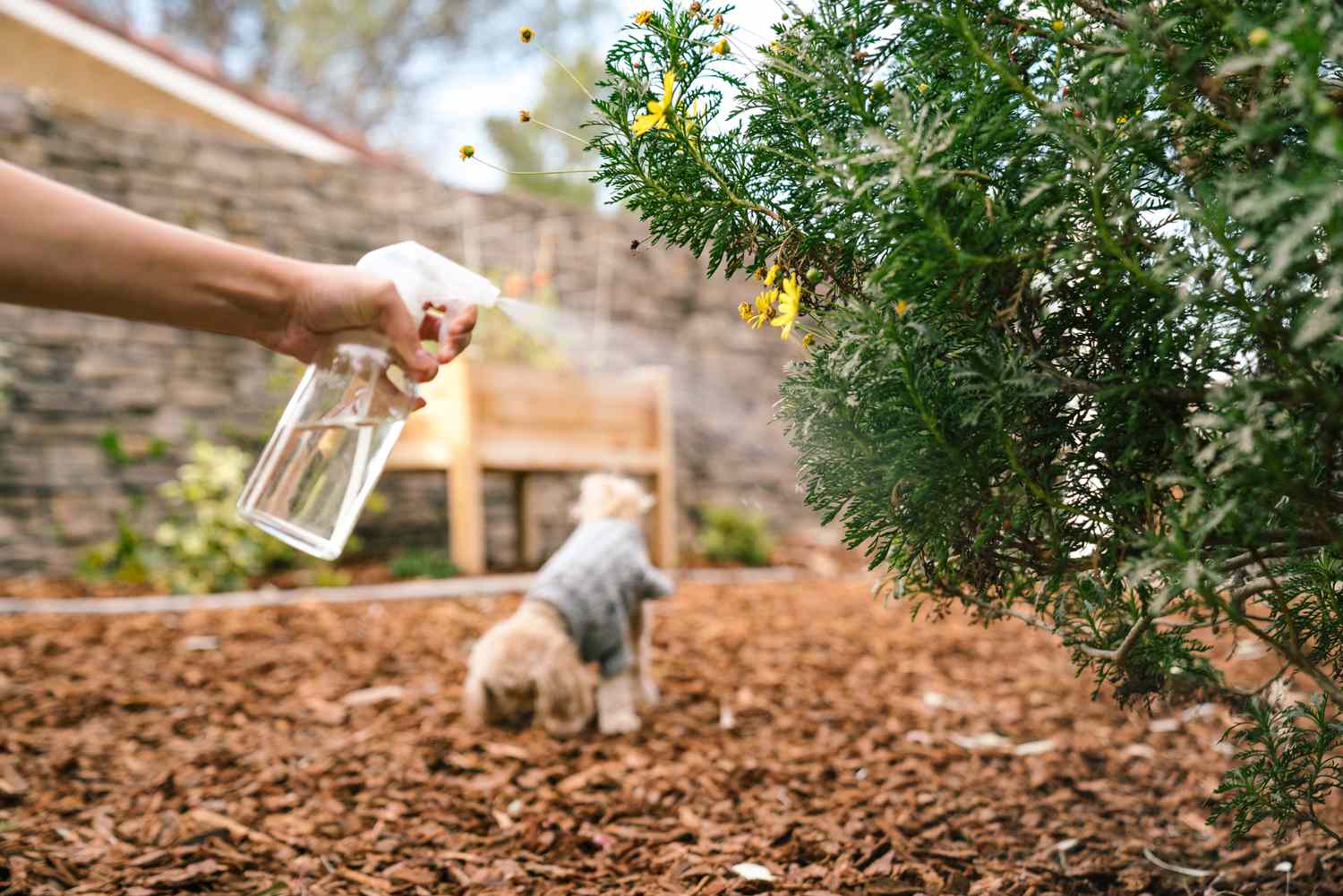Leaky pipes and joints pose a common yet challenging issue for many homeowners and DIY enthusiasts. Discovering pipe leaks can be stressful, but making an immediate fix doesn’t need to be.
Understanding the easy ways to fix these leaks and learning effective repair techniques can save time and money while preserving the integrity of your property.
This comprehensive guide provides detailed information on fixing leaky pipes and joints and clear visual aids through videos and photos.
With this guide, you can get step-by-step instructions on how to fix your leaky pipes without stress and paying someone else to do it for you.
Table of contents
- What Causes Leaky Pipes and Joints?
- What are the Preventive Measures to Reduce Leaks?
- Tools and Materials Needed for Fixing Pipes Leakage
- Step-by-Step Guide on how to fix leaky Pipes and Joints
- How to Fix a Leaky Pipe with Plumbers Tape
- How to Fix a Leaky Pipe with Epoxy Putty
- What is the best sealant for leaky pipes?
- How To Fix Leaky Pipes Video
- FAQs
- Conclusion
- References
- Recommendations
What Causes Leaky Pipes and Joints?
Leaky pipes and joints can be a major headache, leading to water damage, mold growth, and high water bills. Here are some of the common causes of leaky pipes and joints:
Corrosion:
Corrosion is the gradual deterioration of a metal due to a chemical reaction with its environment. Over time, corrosion can weaken and erode pipes and joints, leading to leaks.
Freezing and Thawing:
When water freezes, it expands, putting pressure on the pipes. If the pipes are not strong enough to withstand the pressure, they can crack or burst, causing leaks.
High Water Pressure:
Excessive water pressure can strain pipes and joints, causing them to loosen or crack, resulting in leaks.
Read Also: How To Fix Sticky Buttons On Xbox Controller
Settling and Movement:
Settling of the foundation or movement of the building can put stress on pipes and joints, causing them to break or leak.
Temperature Changes:
Sudden temperature changes, such as from hot to cold, can cause pipes to expand and contract, leading to leaks at joints or weak spots.
Root Intrusion:
Tree roots can grow into pipes, causing cracks and leaks. This is a common problem in older homes with underground pipes near trees.
Damaged Pipes:
Physical damage to pipes, such as hammering, drilling, or accidental impact, can cause leaks.
Improper Installation:
Improper installation of pipes and joints can lead to leaks due to faulty connections or inadequate sealing.
Worn-Out Seals:
Seals around pipes and joints can deteriorate, allowing leaks to develop.
What are the Preventive Measures to Reduce Leaks?
Here are some of preventive measures to reduce leaks:
- Regularly Inspect Pipes: Inspect pipes and joints for signs of wear, corrosion, or leaks.
- Protect Pipes from Freezing: Insulate pipes in areas exposed to cold temperatures to prevent freezing.
- Maintain Proper Water Pressure: Adjust water pressure to a safe level to avoid straining pipes.
- Address Settling Issues: Have foundation problems addressed promptly to minimize pipe stress.
- Allow Gradual Temperature Changes: Avoid sudden temperature changes in pipes by slowly warming or cooling water.
- Control Tree Root Growth: Manage tree roots near pipes to prevent intrusion.
- Handle Pipes with Care: Avoid hammering or drilling near pipes to prevent damage.
- Ensure Proper Installation: Hire a qualified plumber for pipe installation and maintenance.
- Replace Worn-Out Seals: Replace worn-out seals around pipes and joints regularly.
- Monitor Fittings: Regularly inspect fittings for signs of wear or corrosion and replace them if necessary.
By taking these preventive measures and addressing leaks promptly, you can minimize the risk of water damage and maintain a healthy plumbing system.
Read ALSO: How To Install Weatherstripping Doors: Tips And Guidelines
Tools and Materials Needed for Fixing Pipes Leakage
The specific tools and materials needed for fixing a pipe leak will depend on the type and location of the leak, but here is a general list of items that you may need:
Tools:
- Adjustable wrench or pipe wrench: For tightening and loosening nuts and bolts on pipes and fittings.
- Basin wrench: For tightening and loosening nuts on faucets and valves.
- Hacksaw: For cutting pipes and fittings.
- Pliers: For gripping pipes and fittings.
- Putty knife: For removing old sealant and applying new sealant.
- Wire brush: For cleaning pipes and fittings.
- Bucket or pan: For catching water that leaks out during repairs.
Materials:
- Plumber’s putty: For sealing joints between pipes and fittings.
- Teflon tape: For sealing threaded connections.
- Pipe dope: For lubricating and sealing threaded connections.
- Sandpaper: For smoothing rough edges on pipes and fittings.
- Replacement pipes and fittings: If the existing pipes or fittings are damaged, you must replace them.
Additional Supplies:
- Safety glasses: To protect your eyes from debris.
- Work gloves: To protect your hands from sharp edges and chemicals.
- Rags: For wiping up spills and cleaning tools and materials.
In addition to these general tools and materials, you may also need specialized tools and materials for specific repairs. For example, if you are fixing a leak in a copper pipe, you will need a copper pipe cutter and a flaring tool. If you are fixing a leak in a PVC pipe, you will need a PVC primer and cement.
Step-by-Step Guide on how to fix leaky Pipes and Joints
Fixing a leaky pipe or joint may seem daunting, but with the right tools, materials, and a step-by-step approach, you can tackle it yourself. Here’s a comprehensive guide on how to fix leaky pipes and joints:
Step 1: Locate the Source of the Leak
- Turn off the water supply to the affected area. Locate the shut-off valves under the sink or near the appliance connected to the leaking pipe.
- Carefully inspect the pipes and joints in the area for signs of leaks. Look for water droplets, dampness, or corrosion.
- If the leak is not immediately visible, try drying off the pipes and turning on the water again. Observe closely to pinpoint the exact location of the leak.
2: Gather Necessary Tools and Materials
- Ensure you have the appropriate tools, such as adjustable wrenches, pipe wrenches, putty knives, sandpaper, and a bucket or pan.
- Gather the necessary materials, including plumber’s putty, Teflon tape, pipe dope, sandpaper, replacement pipes or fittings if needed, and safety glasses and gloves for protection.
Step 3: Prepare the Leaking Area
- Place a bucket or pan under the leak to catch any water that may escape during the repair process.
- Turn the water supply to the affected area again if it was not turned off.
- Drain any remaining water from the leaking pipe or joint.
- Clean the threads with a wire brush to remove any dirt or corrosion if the leak is on a threaded connection.
- Apply plumber’s putty or Teflon tape to the threads, depending on the type of connection.
4: Repair the Leak
- For threaded connections: Tighten the nut or fitting using an adjustable or pipe wrench. Do not overtighten, as this can damage the pipes or fittings.
- Apply the plumber’s putty or sealant around the joint for non-threaded connections to create a watertight seal. Allow the glue to dry according to the manufacturer’s instructions.
- If the pipe is damaged or cracked, you may need to replace the affected section. Cut out the damaged portion using a hacksaw and replace it with a new piece of pipe of the same size and material.
5: Test the Repair
- Turn on the water supply slowly and check for any leaks. If there are leaks, tighten the connections or reapply the sealant as needed.
- Monitor the repaired area for leaks over the next few days to ensure the repair is holding up.
Read ALSO: How to Fix Broken Window Glass – How to Repair Windows:
How to Fix a Leaky Pipe with Plumbers Tape

Using a plumber’s tape to fix a leaky pipe is a relatively simple process. Here’s a step-by-step guide to help you fix the leak:
- Turn off the water supply: Before starting any work, shutting off the water supply to the affected area is crucial. Locate the shut-off valves under the sink or near the appliance connected to the leaking pipe.
- Drain any remaining water: Open the faucet or valve connected to the leaking pipe to drain any remaining water that might be present.
- Clean the pipe threads: Use a wire brush to clean the pipe threads and fit where the leak is occurring. This will remove any dirt, corrosion, or old sealant that could interfere with the new tape’s adhesion.
- Apply plumber’s tape: Wrap the pipe threads with the plumber’s tape, ensuring it covers the entire length of the threads. Start at the end of the threads and wind the tape tightly in the same direction as the screw threads.
- Add extra tape: To create a slightly thicker seal near the end of the threads, apply an extra layer of plumber’s tape. This will help prevent leaks from occurring at the end of the threads.
- Thread the fitting onto the pipe: Carefully thread it onto the pipe, ensuring it aligns properly and doesn’t cross-thread.
- Tighten the fitting: Use a wrench to tighten the fitting onto the pipe. Avoid overtightening, as this could damage the pipes or fitting.
- Turn on the water supply slowly: Gradually open the shut-off valves to restore water flow to the affected area. Check for any leaks around the repaired joint.
- Monitor the repair: Keep an eye on the repaired joint for the next few days to ensure the leak has been properly sealed and there are no further issues.
How to Fix a Leaky Pipe with Epoxy Putty
Certainly! Fixing a leaky pipe with epoxy putty is a straightforward process. Here’s a step-by-step guide to help you:
Materials Needed:
- Epoxy putty (Make sure it’s suitable for plumbing repairs)
- Gloves
- Sandpaper (to roughen the surface for better adhesion)
- Cloth or rag (to clean the area)
- Utility knife (to cut the putty)
- Water (for wetting hands and smoothing the putty)
Steps
Prepare the Area:
- Turn off the water supply to the leaking pipe.
- Drain any remaining water from the pipe by opening faucets connected to it.
Clean and Dry the Pipe:
- Use a cloth or rag to clean the area around the leak thoroughly.
- Sand the surface around the leak to create a rough surface. This helps the epoxy adhere better.
Prepare the Epoxy Putty:
- Put on gloves to protect your hands.
- Cut a suitable amount of epoxy putty from the package. Follow the instructions on the putty’s packaging for mixing, if necessary.
Apply the Epoxy Putty:
- Knead the epoxy putty thoroughly until it becomes a uniform color (if it’s a two-part putty).
- Apply the putty to the leaky area, pressing it onto the pipe and covering the leak completely.
- Ensure the putty extends beyond the leak and covers a good area around it for a secure seal.
Smooth and Shape the Putty:
- Wet your hands slightly to prevent the putty from sticking to them.
- Smooth the putty over the pipe, shaping it to conform to its surface. This ensures a tight seal and helps prevent future leaks.
Allow the Putty to Cure:
- Let the epoxy putty cure as per the instructions on the packaging. This usually takes a few hours.
Turn on the Water and Check for Leaks:
- Once the epoxy putty has fully cured, turn the water supply back on.
- Check the repaired area for any signs of leakage. If it’s dry, you’ve successfully fixed the leak.
Monitor the Repair:
- Keep an eye on the repaired area for a few days to ensure no further leaks.
What is the best sealant for leaky pipes?
The best sealant for leaking pipes depends on the pipe type and the leak’s location. Here are a few of the most common sealants and their applications:
- Plumber’s putty: This versatile sealant can be used on threaded and non-threaded connections. It is easy to apply and can be used on various materials, including metal, plastic, and PVC.
- Teflon tape: This is made of Teflon, a synthetic fluoropolymer highly resistant to heat and chemicals. It is typically used on threaded connections to seal the threads and prevent leaks.
- Pipe dope: This thick, sticky sealant is used on threaded connections to lubricate the threads and create a watertight seal. It is typically used on metal pipes.
- Epoxy putty: This two-part putty is mixed to form a hard, durable seal. It is often used to repair cracks and holes in pipes.
- Silicone sealant: This flexible sealant seals joints between different materials, such as metal and plastic. It is also often used to seal around fixtures, such as faucets and toilets.
In addition to these sealants, several specialized sealants are designed for specific applications, such as sealing leaks in copper pipes or in high-pressure environments.
Here is a table summarizing the best sealants for different types of leaks:
| Type of Leak | Best Sealant |
| Threaded connections | Plumber’s putty, Teflon tape, pipe dope |
| Non-threaded connections | Plumber’s putty, silicone sealant |
| Cracks and holes | Epoxy putty |
| Joints between different materials | Silicone sealant |
| Leaks in copper pipes | Copper sealant |
| Leaks in high-pressure environments | High-pressure sealant |
It is always a good idea to consult with a professional plumber to get their recommendation on the best sealant for your specific situation.
Read Also: How To Fix A Wobbly Ceiling Fan | Easy Non-Expert Guide
How To Fix Leaky Pipes Video
FAQs
A: Leaky pipes and joints can be caused by corrosion, high water pressure, loose fittings, or temperature changes.
A: Look for signs of water stains, mold, or musty odours near your pipes and joints to identify potential leaks.
A: With the right tools and knowledge, you can often fix leaky pipes and joints yourself.
Conclusion
Fixing leaky pipes and joints can be manageable with the right guidance and tools. Utilizing videos and photos as visual aids, you can better understand the repair process and feel more confident in tackling the issue yourself.
Always prioritize safety and take necessary precautions when working with plumbing systems. With patience and attention to detail, you can successfully address leaks and prevent further damage to your home.





